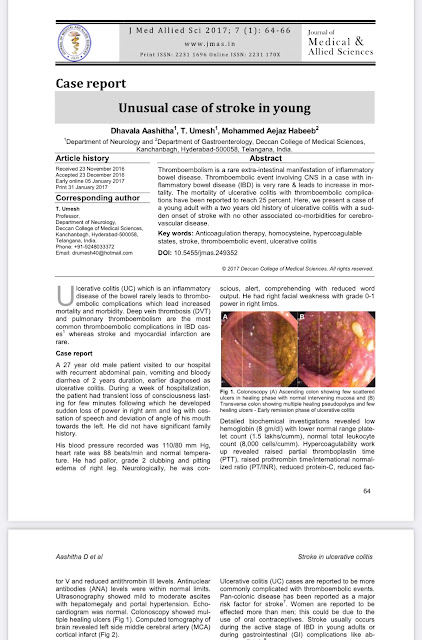Efficacy of Nimodipine in SAH
A double-blind, randomized, placebo-controlled trial within 96 hours of their subarachnoid hemorrhage, to determine whether treatment with the calcium blocker nimodipine would prevent or reduce the severity of ischemic neurologic deficits from arterial spasm.
P - 125 neurologically normal patients with intracranial aneurysms
I - 8 of 60 patients given placebo
C - 1 of 56 given nimodipine
O - Analysis of the amount of basal subarachnoid blood on pre-entry CAT scans in patients with deficits from spasm showed that an increase in subarachnoid blood was not associated with a worse neurologic outcome among patients who received nimodipine, unlike the situation in patients given a placebo. There were no side effects from nimodipine. It was concluded that nimodipine should be given to patients who are neurologically normal after subarachnoid hemorrhage in order to reduce the occurrence of severe neurologic deficits due to cerebral arterial spasm.
Results:
Radiologically using the CAT Scan:
Among patients given placebo who had deficits from the spasm, those with severe neurological outcomes had significantly more blood in their basal SAH spaces than those with good outcomes ( P<0.05)
This is not the case in patients who received nimodipine. All patients with severe outcomes were compared to patients with good outcomes, there was no significant difference in the amount of blood in the basal subarachnoid spaces in these two groups.
Infact patients who received nimodipine with good outcomes had significantly more blood than patients who received placebo with good outcomes (P <0.05).
Angiograms:
The severity of spasm at the time of onset of the deficit (within 48 hours) was significantly related to the severity of the neurological outcome. The greatest degree of spasm of the five arteries measured in each patient was used in the analyses because spasm of only one of the arteries could have resulted in a neurological deficit.
The greatest degree of spasm in patients with normal neurological outcomes were 51.0 +/- 15.7% among 6 patients in the placebo group and 49.4 +/- 13.8 % among 8 patients in nimodipine group.
In contrast, the greatest degree of spasm in patients with severe outcomes was 35.0 +/- 12.9 % among 7 patients in the placebo group and 22% in one patient of nimodipine group.
Recurrent hemorrhagic from Aneurysm:
7 of 56 taking Nimodipine
9 of 60 taking placebo.
Mortality:
7 patients in the placebo group died by the end of the 21 days of treatment. 3 patients who received nimodipine died during the same period.
https://www.nejm.org/doi/full/10.1056/nejm198303173081103




Comments
Post a Comment